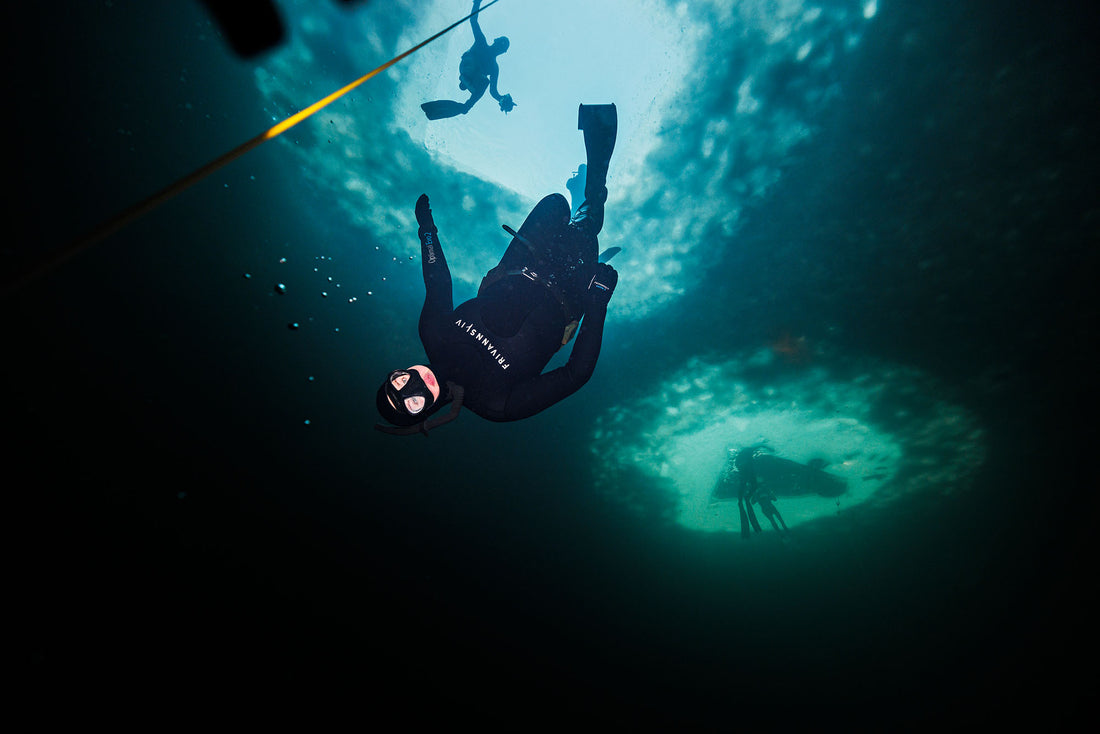Photo: Aleksander Nordahl , ettpust.com
When you dive, you are exposed to increasing pressure. An air pressure builds up in the ear canal and the mask, and this must be compensated for. Many people experience that their ears hurt when diving, and that it can be difficult to equalize the ears. In this article we go through some of the basics.
Is it difficult to equalize pressure in the ears?
Practice makes perfect, and for most you can say the same about equalization, but if the first dives are difficult to complete because you are unable to equalize, you can get off to a bit of a bad start.
- A typical "mistake" is starting too late with the equalization. Start when you start the dive, before your head has time to go under water.
- Sniff some salt water into your nose and blow it out again a few times before you start diving. Then you get cleaned up a bit.
- Do you have a cold? Do not dive.
Equalization methods
There are several recognized methods of compensation. The two most common are "Valsalva compensation" and "Frenzel compensation" .
Valsalva compensation is one of the most widely used methods for diving. It is performed by holding the nose while blowing air out the nose, then you push air up into the middle ear and counteract the pressure from the outside. What many people do wrong with this method is to start too late with the equalization. Before the dive, you lie calmly on the surface until your breathing is calm and you feel ready. When you are about to "break down", you start the equalization so that it occurs before the head is under water. Valsalva compensation is based on a method developed by the Italian physiologist Antonio Maria Valsalva (1666-1723)
Frenzel compensation is the most effective compensation method for freediving and is essential when diving deeper than 15m. Here, one does not use the breath to compensate, but creates an overpressure in the middle ear by holding the nose, closing the larynx and trying to pronounce a consonant. The movements of the tongue will create an air pressure in the mouth which in turn balances the middle ear. The method is named after Dr. Hermann Frenzel (1895-1967) who used it in connection with the training of German bomber pilots.
Equalize pressure in the mask
When diving, you breathe a little air out your nose and into the mask. This avoids the mask being "pulled" towards the face and creating a "mask squeeze".

Congested sinuses
Colds or pollen allergies can cause blocked sinuses. Between the air-filled sinuses in the frontal bone you have some relatively narrow air channels. The walls of these air passages have a mucous membrane that has a tendency to swell and produce mucus when you have a cold. Usually, the smoothing of these cavities takes place without you noticing. When the air ducts become clogged, however, you will feel it quickly! Do not dive when you have blocked sinuses.
If you want in-depth information about equalization of pressure in the ears, what affects this and methods for training equalization, we recommend you buy the book Freediving for all . This is a book written by experienced professionals in freediving and apnea, underwater photography, equipment development, psychology, food technology, marine biology and other relevant subjects. It is full of both subject matter and inspiration, and regardless of whether you are interested in snorkelling, freediving and apnea, food gathering or marine biology, you will find something for you.


